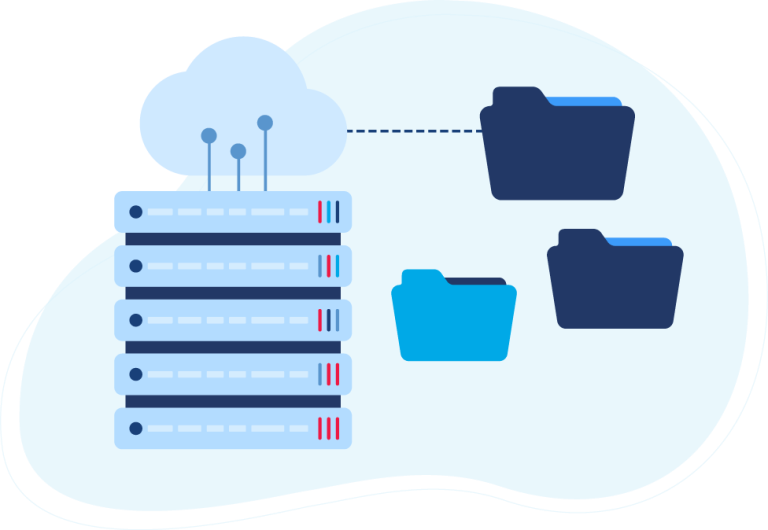Before the advent of modern order management software, product orders were typically received via phone call, fax, or direct mail. After the sales order was received, the next steps in the order management process were the manual work of checking inventory levels, calling a warehouse to make sure the items were in stock, printing out packing slips, removing the item from inventory, and taking it to the post office.
Using manual processes like these do not work in a modern ecommerce landscape. Customers expect next day or two-day shipping, product availability in multiple locations, real-time order status updates, and order processing from dozens of sales channels.
If a customer makes it to checkout and sees it could take a week or longer to get their order, chances are they will abandon their cart. Technology has raised the bar on customer expectations. Fortunately, you can also use technology to streamline your complete multichannel order management process and keep customers coming back.
What is an Order Management System?
An order management system (OMS) is fundamental to driving scalable, shock-resistant operations. An order management solution is a software that organizes multichannel orders into manageable tasks and helps to keep your ecommerce order fulfillment process running smoothly.
An OMS will integrate with your ecommerce platform and your inventory management system to give you an accurate account of a product’s availability, incoming orders, and other facets of your business, including:
- Order picking, packing, processing, and shipping
- Inventory visibility including locations and quantities
- Product information
- Vendor information
- Returns and refunds
- Sales channels
- Customer information
- Order status
Using this data, an order management system will find the closest warehouse to your customer, determine the best delivery method to use, and update inventory globally behind the scenes while you run your business.
Data is Fundamental to Achieve Efficient and Effective Order Management
Understanding what data integration can do for your business can inform whether your business takes a strategic approach to managing order data like VL OMNI’s or other types of data integration approaches. Data integration turns your disparate applications into an efficient, scalable commerce machine. Whether you sell on Shopify, a marketplace like Amazon or Walmart, your own custom digital storefront – or anywhere in between, you need efficient data integration across your sales and fulfillment network to ensure you stay stocked and profitable. Without unified data, automation and growth are impossible.
Why is Having an Order Management System Important?
If your business has multiple warehouses or sells on multiple sales channels, then having an order management system in place is necessary for seamless order fulfillment.
Sales channel selection has never been greater. Customers can purchase your product on marketplaces like Amazon, Etsy, eBay and Walmart, or storefronts supported by Shopify or BigCommerce. Even big-box retailers are partnering with digitally native brands to expand their mutual reach. Today, eCommerce retailers need multiple sales channels to be successful. Each channel can potentially bring you more sales by exposing your brand to a larger group of customers.
But if your business doesn’t have an order management system in place to handle the volume and velocity of orders that this increased exposure can bring, there will be bottlenecks and errors. These bottlenecks will affect your employees, vendor relationships, customer experience, and overall business.
Removing Complexity and Simplifying Order Management
Adding multiple locations, warehouse(s), and multiple suppliers to this mix of sales channels increases the chaos. Not only does your business have to track where the order comes from, but also which warehouse the product is located in. The right order management system will control this supply chain chaos, drive operational efficiency, streamline the order process, and fix your inventory management problems.
A unified order management system will help a retailer:
- Track orders for both your customers and customer service staff
- Forecast stock levels to avoid stock-out situations with real-time analytics
- Integrate with accounts receivable, accounts payable, and ledgers to create a purchase order and invoicing
- Accept orders from every sales channel you use
- Route orders from a specific warehouse based on customer proximity
- Update inventory across all sales channels and systems
- Provide information to warehouses or 3PLs to fulfill orders
An effective order management system will automate these processes for you, so you can focus on sales, growth, and customer service.
Order Management System Trends
Order management systems are constantly changing as technology advances. Machine learning and automation have changed the way ecommerce retailers handle an incoming customer order. Legacy systems including the once lauded ERP system are not designed for the nuances of modern commerce. Machine learning, workflow automation, and data collection have advanced immensely in the last decade, and the growth we see now is nothing compared to the changes we will see in the next few years.
Order management systems of the future will integrate into more business fulfillment processes. It will turn inventory into a science, unlocking more profits and driving more growth. OMS will have access to your customers’ data when they visit a sales channel, thereby tailoring product recommendations to their needs and improving their experience. This leads to higher customer satisfaction, better sales, and more referrals.
Future order management systems will predict what a customer is going to buy before they click purchase. This means that the order fulfillment can begin even before the order has been placed. Someday soon, the weather, the season, marketing campaigns, and past order history will forecast customer orders.
Multiple channels, multiple fulfillment methods, and multiple locations in combination with advanced machine learning make legacy order management systems obsolete. Modern eCommerce technology will depend on an up-to-date distributed order management system to unify all of the disparate operational data coming from each silo.
What to Look for in an Order Management System
The price for an order management system can vary from a few hundred dollars to thousands of dollars (per month). It’s critical to know what you require before deciding on the right OMS, so you get all the features you need without paying extra for functionality you never use; otherwise, the new system may only complicate your process.
Do you want insights on your profits and losses? Does the system provide it? The order management software you choose should give you a deep understanding of how to increase your bottom line through profit margin reports on all your SKUs.
Streamline your Order Fulfillment Process
Does the software handle all the order fulfillment options that your business uses? Does it integrate with all your shipping providers? Can it split an order, place an order on hold, or locate alternative fulfillment methods? An effective order management system will streamline your order fulfillment process.
The perfect order management software will enable you to scale your business. When set up correctly, it can make decisions on your behalf around replenishment, order processing, and fulfillment. It will allow you to focus on growth and making more sales.
Best Order Management System
There are many order management software programs to choose from. Once you know your unique business requirements, you can make an informed decision based on available solutions. Always remember that the best order management system for your company is the one that works behind the scenes to streamline your supply chain and order fulfillment process.
All you should know is that orders are being handled efficiently, customers are getting products on time, and customer service and employees can focus on tasks that aren’t better handled by automation.
Conclusion
It is time for modern ecommerce businesses to drop the inventory management myths and let technology take the lead.
Order management systems have evolved over the years to keep up with the changes in the ecommerce ecosystem. They can handle multiple locations, multiple suppliers, multiple fulfillment options, and multiple sale channels automatically.
Ultimately, an order management system will manage your orders and inventory for you, so you can spend more time managing your business.
About The Author
Gina Ellison
Gina Ellison manages Partner Marketing for Extensiv, an operations platform designed to help multichannel sellers and D2C brands unify and automate their retail operations. When Gina is not marketing eCommerce software, she likes to spend time outdoors with her dog Elli.
 D365 Business Central
D365 Business Central Netsuite
Netsuite





